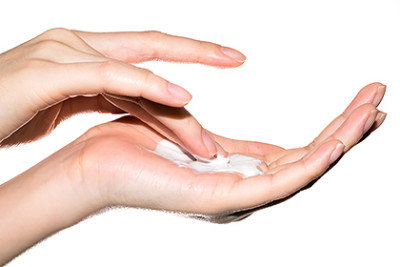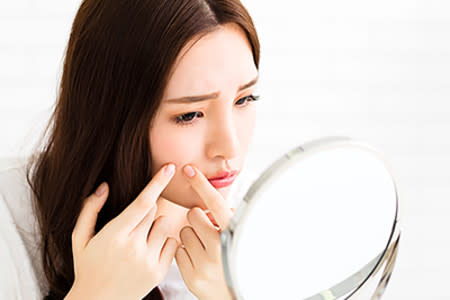9 things to try when acne won’t clear
Do you feel you’ve tried just about everything to get rid of your acne but still see blemishes? Don’t despair. To see clearer skin, you probably just need to make some changes.
The following tips from dermatologists can help you get started.
Give an acne treatment at least 4 weeks to work. Using a new acne product every few days may seem useful, but that approach can worsen acne. Acne treatment needs time to work. Using a different product every few days can also irritate your skin, causing new breakouts.
If a treatment works for you, you should notice some improvement in 4 to 6 weeks. It can take two to three months or longer to see clearing.
If you notice improvement, keep using the treatment. Even when you see clearing, you'll want to keep using the acne treatment. This helps to prevent new breakouts.When to see a dermatologist about acne?
Seeing a dermatologist can help prevent acne from worsening. You can benefit from seeing a dermatologist when acne:
Causes acne cysts and nodules (deep blemishes that can leave scars when they clear)
Hasn’t cleared with treatment you can buy without a prescription
Makes you feel uncomfortable, and you want clearer skin
Attack the different causes of acne. If you don’t see improvement after 4 to 6 weeks, add a second acne product to your treatment plan.
This approach can help attack the different causes of acne. Bacteria, clogged pores, oil, and inflammation can all cause acne.
Of course, the second treatment should attack a different cause of acne. For example, if you are using an acne treatment that contains benzoyl peroxide, the second acne treatment should contain another acne-fighting ingredient. To help you select another product, here’s what the different active ingredients work on:- Benzoyl peroxide decreases P. acnes bacteria
- Retinoids, such as adapalene gel, unclog pores and reduce oiliness
- Salicylic acid eases inflammation and unclogs pores
Try 1 or 2 products, and give them time to work. Trying too many products can stress your skin, worsening acne.

Follow directions. While using an acne treatment can seem pretty straightforward, how much you use and how often you use it can make a huge difference. Be sure to follow the directions.
If a dermatologist created your treatment plan, follow your doctor's instructions and use everything your dermatologist included in the treatment plan.Using only some of the acne treatment that your dermatologist prescribes could be the reason you still have acne.

Wash your face twice a day and after sweating. Acne-prone skin is sensitive. Washing more than twice a day can irritate your skin, making acne worse.
For best results, dermatologists recommend washing your face when you:- Wake up
- Are ready to go to bed
- Have a sweaty face
Stop scrubbing your face and other acne-prone skin. If your skin feels greasy, dirty, or grimy, you may be tempted to scrub it clean. Don’t! Scrubbing can irritate acne-prone skin, which worsens acne.
Use skin care products and cosmetics that don’t cause acne. These products are labeled. On the package, you may see one of the following:
- Won't clog pores
- Non-comedogenic
- Non-acnegenic
- Oil free
Resist touching, picking, and popping your acne. Popping a pimple may seem like the fastest way to clear it, but popping it can actually make things worse. Every time you touch, pick, or pop, you can worsen acne.
Resist touching, picking, and popping your acne
Popping a pimple often worsens acne.

Spread acne medication on all acne-prone skin, not just your blemishes. Applying a thin layer on your acne-prone skin helps treat existing acne and prevent new breakouts.
Enlist a dermatologist's help. If you still have acne after trying these tips, a dermatologist can help.
With today's acne treatments and a dermatologist's expertise, virtually every case of acne can be cleared. A dermatologist can tailor a treatment plan to your unique needs.
Now that you know what can help clear acne, what changes are you going to make?
Have a skin, hair, or nail problem?
No one understands your skin better than a board-certified dermatologist. Partner with the expert for the best care.
Related AAD resources
Images
Getty Images
References
Draelos ZD, DiNardo JC. “A re-evaluation of the comedogenicity concept.” J Am Acad Dermatol 2006;54:507-12.
Harper, J. “Acne: The Basics.” May 2003. [The tips in this article came from a dermatologist, Julie Harper, MD, who wanted to help her patients and others get better results from their acne treatment.]
Written by:
Paula Ludmann, MS
Reviewed by:
Erin Ducharme, MD, FAAD
Matthew J. Elias DO, FAAD
Laurel Geraghty, MD, FAAD
Carrie L. Kovarik, MD, FAAD
Shari Lipner, MD, PhD, FAAD
Bassel Hamdy Mahmoud, MD, PhD, FAAD
Sanna Ronkainen, MD, FAAD
Dara Spearman, MD, FAAD
Last updated: 9/12/23
 Atopic dermatitis: More FDA-approved treatments
Atopic dermatitis: More FDA-approved treatments
 Biosimilars: 14 FAQs
Biosimilars: 14 FAQs
 How to trim your nails
How to trim your nails
 Relieve uncontrollably itchy skin
Relieve uncontrollably itchy skin
 Fade dark spots
Fade dark spots
 Untreatable razor bumps or acne?
Untreatable razor bumps or acne?
 Tattoo removal
Tattoo removal
 Scar treatment
Scar treatment
 Free materials to help raise skin cancer awareness
Free materials to help raise skin cancer awareness
 Dermatologist-approved lesson plans, activities you can use
Dermatologist-approved lesson plans, activities you can use
 Find a Dermatologist
Find a Dermatologist
 What is a dermatologist?
What is a dermatologist?



